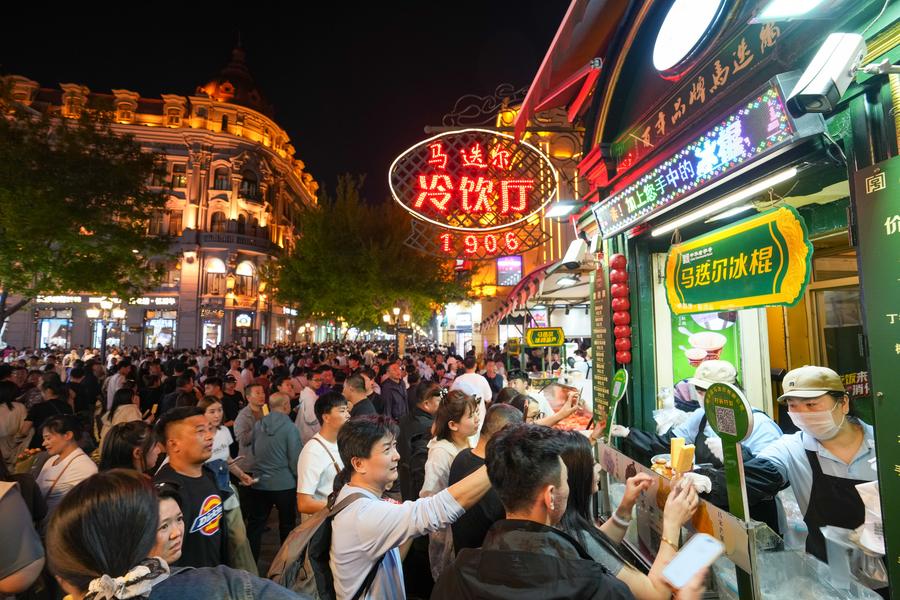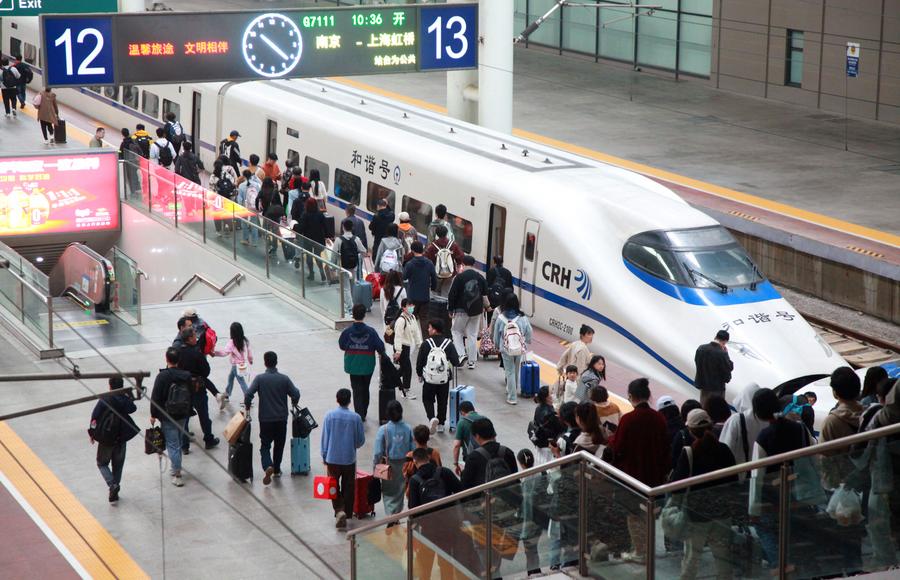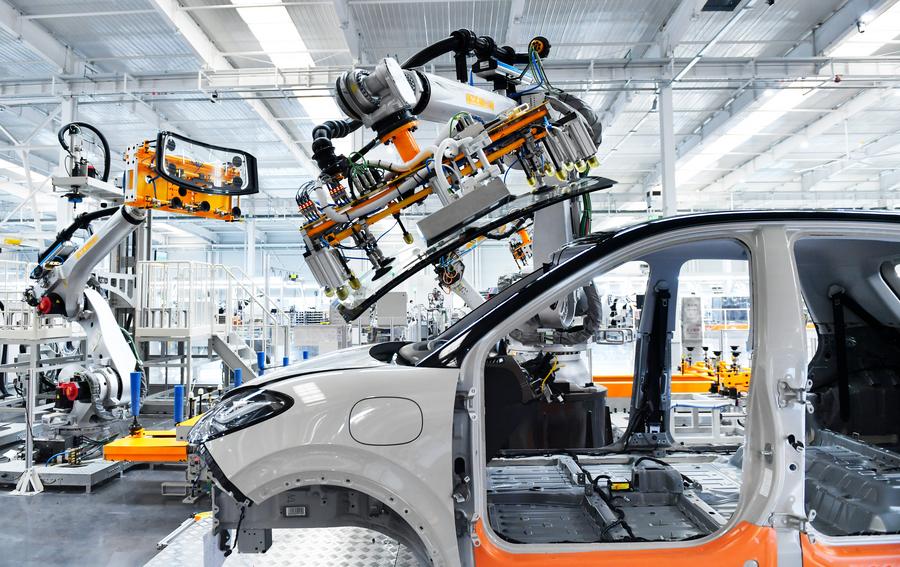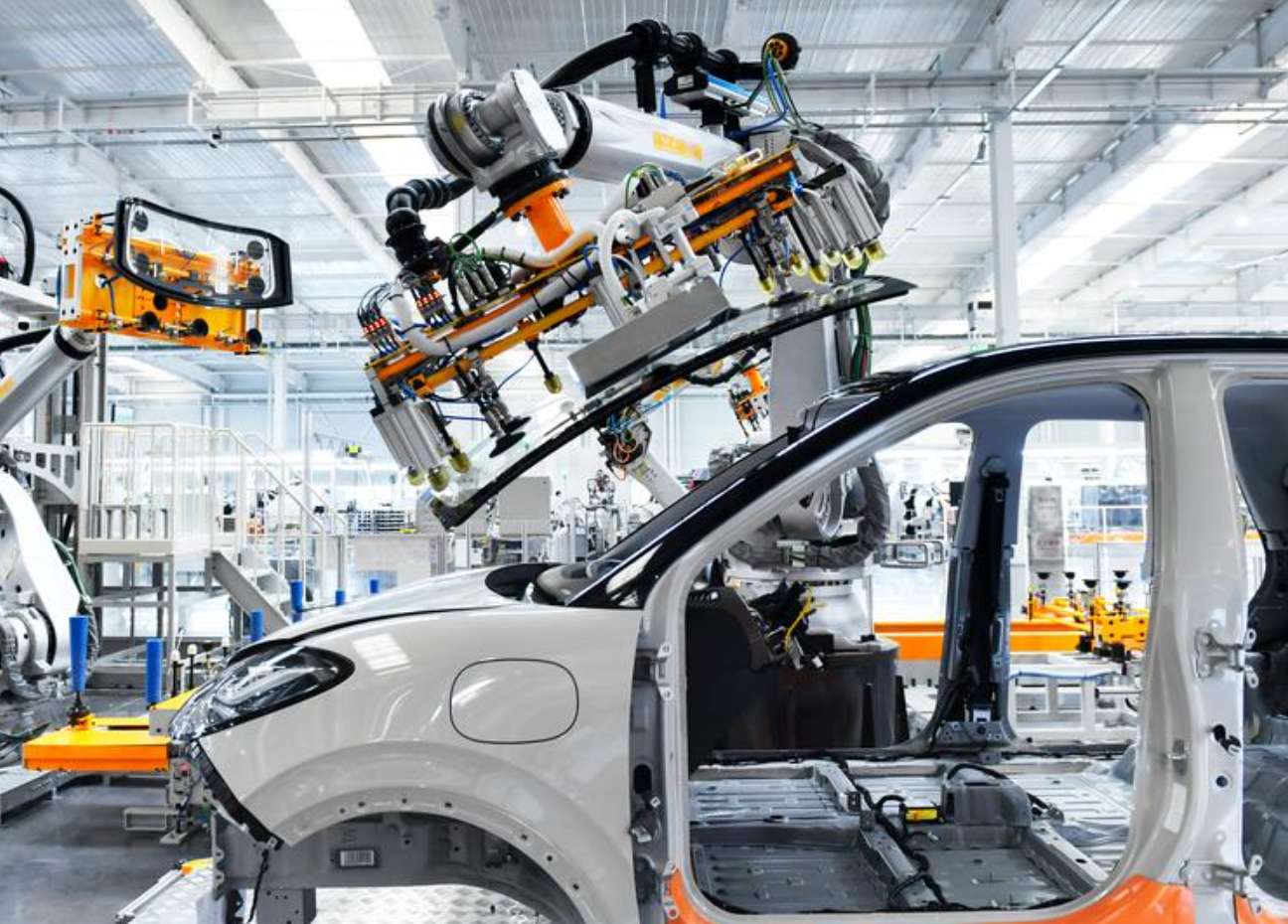* Faster growth in consumption became a highlight in May, driven by factors such as the May Day holiday, the consumer goods trade-in policy, and the early start of online sales promotions.
* Industrial production has grown at a fast rate since the start of the year amid the nation's efforts to push forward industrial transformation and upgrade.
* The property market is still in the process of readjustment.
* International organizations and institutions have raised their forecasts for China's economic growth.
BEIJING, June 17 (Xinhua) -- The Chinese economy extended an upward recovery trend in May, as shown by faster consumption growth and steady expansion in industrial production, latest government data showed.
Important economic indicators rebounded during the month amid government measures to prop up growth and promote high-quality development, National Bureau of Statistics (NBS) spokesperson Liu Aihua said at a press conference in Beijing on Monday.
According to Liu, a consumption rebound supported by the May Day holiday, along with improved data for exports and imports as well as the services industry, helped boost the economy during the month. "Driven by such factors as macroeconomic policies taking effects, improving external demand and the May Day holiday, the services industry, consumption as well as imports and exports all rebounded in May."

Tourists buy popsicles at the Central Street in Harbin, northeast China's Heilongjiang Province, May 3, 2024. (Xinhua/Wang Jianwei)
Despite the complex and grave external environment and effective domestic demand remaining insufficient, Liu told the press that the Chinese economy has maintained a "generally stable trend."
FASTER CONSUMPTION GROWTH
Faster growth in consumption became a highlight last month. In May, retail sales of consumer goods expanded 3.7 percent year on year to 3.92 trillion yuan (about 551 billion U.S. dollars). On a month on month basis, consumer goods retail sales rose 0.51 percent from the previous month.
"Due to the May Day holiday, the effective trade-in policy of exchanging old consumer goods for new ones, and the early start of the June 18 online sales promotion, the year-on-year growth rate of consumer goods retail sales in May were 1.4 percentage points higher compared to the previous month," Liu said.
Services consumption boomed as a result of robust travel during the holidays, which pushed up demand for cultural and tourism-related services, Liu said.

Passengers board a train at Nanjing Railway Station in Nanjing, capital of east China's Jiangsu Province, on May 5, 2024. (Photo by Liu Jianhua/Xinhua)
Upgraded consumption also pushed up retail sales of product categories including sports and recreational goods, cosmetics, communication equipment, as well as household appliances and audio-visual equipment to grow 20.2 percent, 18.7 percent, 16.6 percent and 12.9 percent, respectively.
New energy passenger vehicle transactions in China were also robust last month, growing 38.4 percent year on year, Liu said, citing data from the China Automobile Dealers Association.
The services industry in general reported growth last month, with the sub-indices for information transmission/software/information technology services, leasing and business services, transport/warehousing/postal services, as well as the wholesale and retail trade, all reporting faster year-on-year growth in May.
Meanwhile, online retail sales surged 12.4 percent year on year in the January-May period, the data showed.
INDUSTRIAL PRODUCTION EXPANDS
In May, the value-added industrial output went up 5.6 percent year on year, or 0.3 percent up month on month.
Specifically, the industrial value-added output in the manufacturing sector grew 6 percent, and that for high-tech manufacturing surged 10 percent year on year. "3D printing equipment, new energy vehicles, and integrated circuits grew 36.3 percent, 33.6 percent, and 17.3 percent, respectively," said Liu, who also revealed that profits of industrial enterprises hit more than 2.09 trillion yuan during the January-April period, up 4.3 percent year on year.

Robots install windshields for cars at an intelligent workshop of Chinese automobile manufacturer SAIC-GM-Wuling in Liuzhou, south China's Guangxi Zhuang Autonomous Region, May 9, 2024. (Xinhua/Jin Haoyuan)
Industrial production has grown at a fast rate since the start of the year amid the nation's efforts to push forward industrial transformation and upgrade, Liu said. "Going forward, there are many favorable factors to promote the rapid growth of industrial production. These include better production expectations from enterprises and improving industrial profits."
Furthermore, the gradual implementation of policies such as large-scale equipment renewals will add new impetus to industrial production, Liu said.
From the perspective of foreign trade, China's goods imports and exports increased by 8.6 percent year-on-year in May, 0.6 percentage points faster than the previous month, data showed.
BRAVING CHALLENGES
NBS data on Monday showed that the nation's property market remained a drag on the economy.
The nation's fixed asset investment in the first five months of the year grew 4 percent year on year. If deducting investment in the property sector, the nation's fixed asset investment during the period would have otherwise grown 8.6 percent, Liu said.
The floor area of new home sales went down 20.3 percent in the first five months year on year, with sales value also down 27.9 percent.
The property market is still in the process of readjustment, Liu said.
In mid-May, Chinese authorities unveiled a raft of tailored measures in the face of a cool down in the sector, including cutting down payment ratios, abolishing the commercial mortgage rate floors for first and second homes, and establishing a re-lending facility that supports local state-owned enterprises to use those funds to buy commercial homes for affordable housing.
"The policies and measures take time to make an impact on the market," Liu said, adding that the government will strive to implement the policies and measures already rolled out and explore new approaches to destock home supplies and stabilize the market.

A job seeker attends a job fair dedicated to persons with disabilities in Beijing, capital of China, May 27, 2024. (Xinhua/Li Xin)
The data also showed that in May, the surveyed urban unemployment rate stood at 5 percent, unchanged compared to the previous month and 0.2 percentage points lower compared to May 2023.
However, Liu explained that China still faces challenges in employment both because of the many jobs the country will need to generate for job seekers and the structural issues in the employment market.
ECONOMIC REBOUND TO CONTINUE
"Going forward, driven by the development of new quality productive forces in accordance with local conditions, we expect new industries, new business formats and new business models to give rise to a growing number of new businesses and new jobs," Liu said.
Recently, the World Bank raised its forecast for China's 2024 economic growth to 4.8 percent, 0.3 percentage points higher from the previous forecast. The International Monetary Fund also revised up China's economic outlook to 5 percent, 0.4 percentage points higher than the previous forecast, Liu said.
"International organizations and institutions have raised their forecasts for China's economic growth, which fully demonstrates the confidence in China's economic growth prospects," Liu said.
Based on analyses of production, consumption, and government policy support, the economy is expected to continue to rebound and improve, she added.
(Video reporters: Ding Ting, Zhang Mengjie, Yuan Min; video editors: Zhang Nan, Yin Le, Shi Peng, Zheng Xin, Zhang Qiru)




 A single purchase
A single purchase









